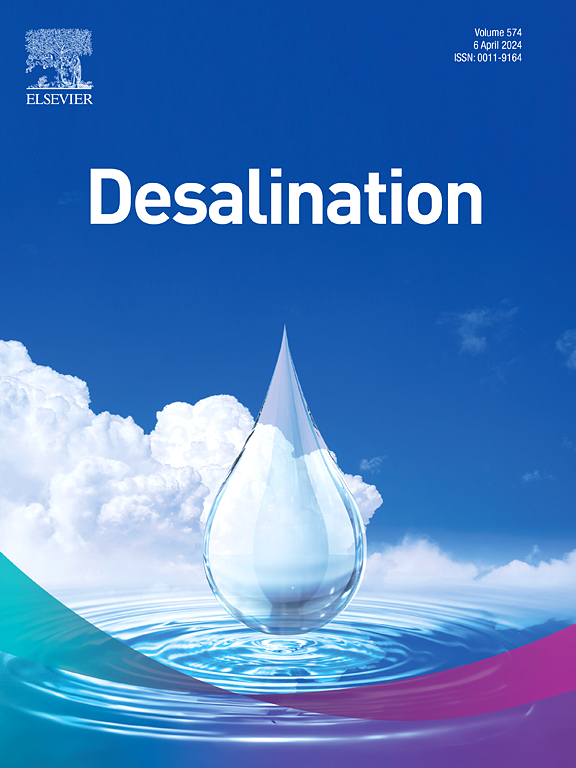Synergistic N–P co-doped in biochar electrodes for enhanced capacitive deionization of norfloxacin: Mechanistic insights from experimental and DFT studies
IF 9.8
1区 工程技术
Q1 ENGINEERING, CHEMICAL
引用次数: 0
Abstract
The prevalence of norfloxacin (NOR) in aquatic environments poses significant health risks, necessitating the development of efficient removal technologies. This study introduces a sustainable approach by synthesizing N–P co-doped porous carbon (PNKBC) electrodes via impregnation-pyrolysis, utilizing longan shells as the carbon source, phosphoric acid as the phosphorus source, and melamine as the nitrogen source. Electrochemical evaluations reveal that PNKBC electrodes exhibit the maximum adsorption capacity of 14.9 mg g−1, along with excellent cycling stability. Structural characterizations indicate that N and P co-doped enhances pore architecture, increases defect sites, and improves hydrophilicity, thereby augmenting electrochemical performance and NOR adsorption efficiency. The adsorption behavior supported by DFT modeling is consistent with an essential contribution from π-π interactions. Furthermore, practical applications demonstrate the electrode's effective performance in treating lake and tap water, underscoring its potential for real-world water purification. This work offers a novel material design strategy for CDI systems aimed at mitigating NOR contamination in water sources.

协同N-P共掺杂生物炭电极增强诺氟沙星的电容性去离子:来自实验和DFT研究的机制见解
诺氟沙星(NOR)在水生环境中的普遍存在对健康构成重大威胁,因此有必要开发有效的去除技术。本研究以龙眼壳为碳源,磷酸为磷源,三聚氰胺为氮源,采用浸渍热解法制备N-P共掺杂多孔碳(PNKBC)电极。电化学评价表明,PNKBC电极的最大吸附容量为14.9 mg g−1,并具有良好的循环稳定性。结构表征表明,N和P共掺杂增强了孔隙结构,增加了缺陷位点,改善了亲水性,从而提高了电化学性能和NOR吸附效率。DFT模型支持的吸附行为与π-π相互作用的重要贡献是一致的。此外,实际应用证明了电极在处理湖泊和自来水方面的有效性能,强调了其在现实世界水净化方面的潜力。这项工作为CDI系统提供了一种新的材料设计策略,旨在减轻水源中的NOR污染。
本文章由计算机程序翻译,如有差异,请以英文原文为准。
求助全文
约1分钟内获得全文
求助全文
来源期刊

Desalination
工程技术-工程:化工
CiteScore
14.60
自引率
20.20%
发文量
619
审稿时长
41 days
期刊介绍:
Desalination is a scholarly journal that focuses on the field of desalination materials, processes, and associated technologies. It encompasses a wide range of disciplines and aims to publish exceptional papers in this area.
The journal invites submissions that explicitly revolve around water desalting and its applications to various sources such as seawater, groundwater, and wastewater. It particularly encourages research on diverse desalination methods including thermal, membrane, sorption, and hybrid processes.
By providing a platform for innovative studies, Desalination aims to advance the understanding and development of desalination technologies, promoting sustainable solutions for water scarcity challenges.
 求助内容:
求助内容: 应助结果提醒方式:
应助结果提醒方式:


